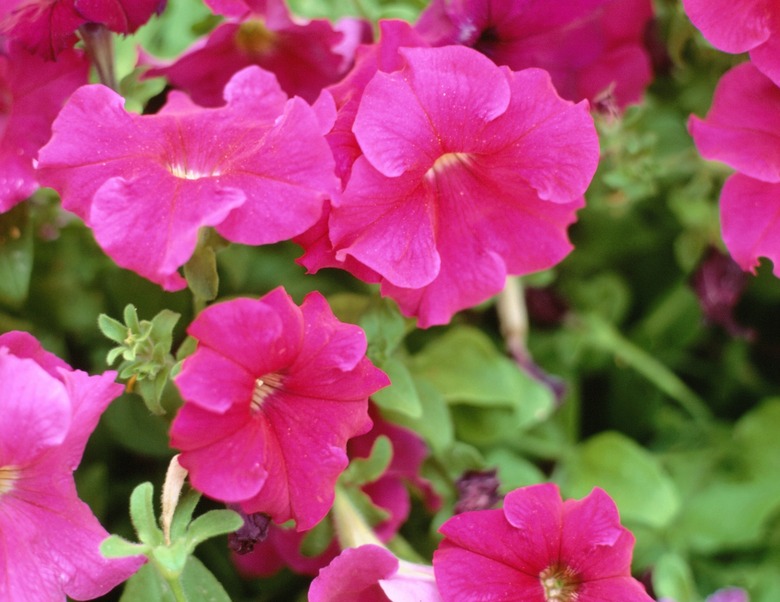How To Keep Petunias Flowering
We may receive a commission on purchases made from links.
Garden petunias (Petunia x hybrida, USDA hardiness zones 10-11) often bloom vigorously early in the growing season, but it takes a little more work to keep petunias flowering abundantly later in the season. Petunias tend to get leggy and spindly during the summer months, and the long stems produce fewer blooms that are often smaller in size. Giving your petunias ideal growing conditions and doing a little pruning can encourage vigorous flowering throughout the growing season. With proper care, you can enjoy long-lasting blooms on your healthy petunia plants from spring to fall.
Choose a Sunny Spot
Choose a Sunny Spot
Petunias love the sun and need lots of it to flower well. If you plant your petunias in a shady area, they'll likely become spindly and won't produce many flowers. The more shade they experience, the fewer flowers they produce. Petunias can handle full sun all day long, but they need at least five to six hours of sunlight for proper growth and flowering.
Water Petunias Deeply
Water Petunias Deeply
Petunia plants need regular water, but they're heat tolerant and can go a week or so without being watered. In extremely hot or dry conditions, you might need to water the plants more often. Spreading-type petunias need more water in general than other varieties, as do potted petunias since the soil dries out faster in containers. When you water your petunias, water them deeply to encourage the roots to grow deeply. This creates a healthy, vigorous plant that can handle heavy flowering.
Apply Fertilizer Regularly
Apply Fertilizer Regularly
Since petunias are such heavy bloomers, they need fertilizer throughout the growing season to support that fast growth. Apply a balanced fertilizer every three weeks to keep petunias flowering well. You can use a time-release fertilizer for potted petunias. Water the petunia before fertilizing for best results.
Keep Petunias Flowering With Deadheading
Keep Petunias Flowering With Deadheading
Deadheading is the practice of removing the older, fading, dying flowers from the plant. Not only does this make the petunia plant look better by getting rid of the old growth but it also allows the plant to put more energy into growing new blooms. When you deadhead petunias, you also keep it from producing seeds, which can keep petunias flowering.
To deadhead a petunia, clip the stem just below the old flower. The seeds develop at the base of fthe flower, so you want to remove that portion to have the desired effect.
Prune Long Petunia Stems
Prune Long Petunia Stems
Pruning petunia plants in the summer can encourage new growth and blooming. During the summer, the stems tend to grow long without leaves, and the flowers only grow at the ends of the stems. This can make the blooms look sparse and can make the plant look less attractive.
Grab your pruning shears and cut back the stems to half the length or even shorter. You can do the entire plant at once for a quick renovation or prune a third of the stems each week. If you choose this method, trim stems from all over the plant to make it look more balanced. This midsummer pruning encourages new growth and additional flowering to give your petunia plant new life. The plant might look unattractive for a short time, but it quickly resumes flowering and looks better than it did.
You can start pruning your petunia earlier in the season to avoid the spindly stage. Once the stems are at least 8 inches long, prune a few of them each week. This encourages continued vigorous growth and allows you to prune the entire plant gradually for better flowering.
